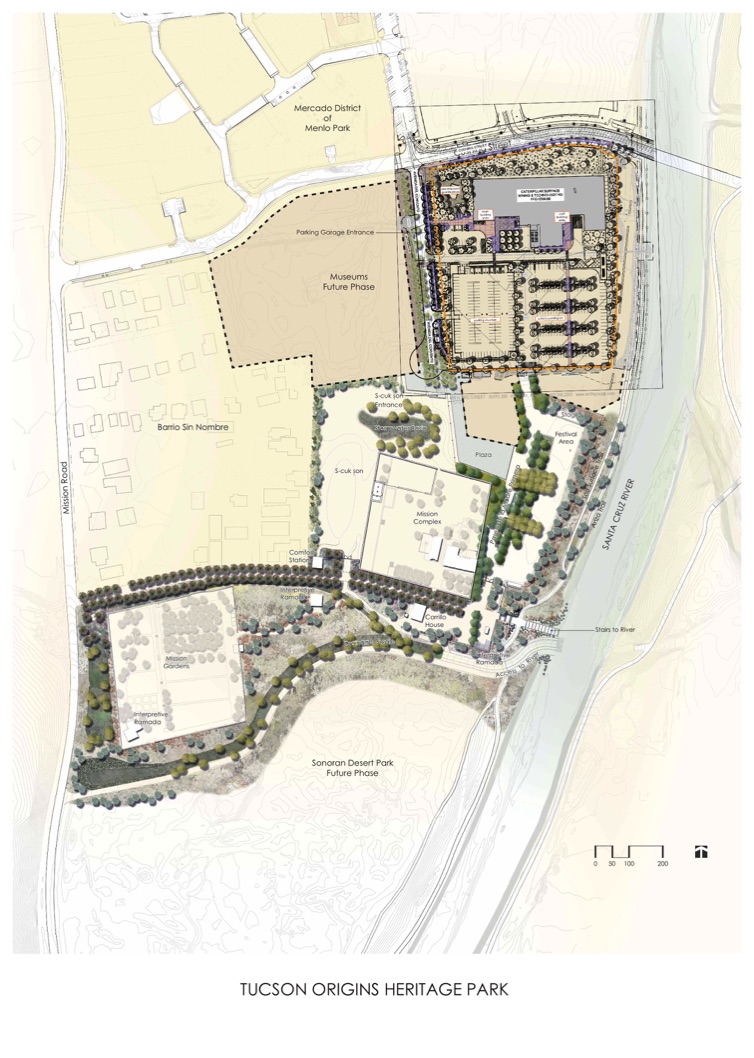
Tucson Origins Heritage Park
The Tucson Origins Heritage Park (TOHP) is composed of 4 components. These include Mission Garden (owned by Pima County), S-cuk Son, Mission Complex, Festival Area (owned by City of Tucson/COT) and the Carrillo House (owned by Rio Nuevo).
Currently the COT is proposing to provide a Historic designation to the area. The City is proposing to make this area a historic site under a City ordinance. A public hearing would need to take place and residents within 100 feet of the boundaries of TOHP would need to be notified of the hearing. However, with the pandemic, plans appear to be on hold. This would provide some protection of the area from development, making it harder for development to take place.
For some, anything related to TOHP is dead - after 20 years its time has come and gone. But taxpayers strongly supported this project with their votes at the time. Even with construction-ready plans for the Convento site the cost would be prohibitively high. There is also a backlash associated with colonialism as we have seen in California with the mission history associated with Padre Serra. Instead, it might be more productive to focus on the “wings” of TOHP, with the Mission Complex in the center, the Festival Area to the east and S-cuk Son to the west. This would include honoring the First People and working with Alice Sadongei who has project-ready plans for S-cuk Son, with has strong ties to the Tohono O'Odham Nation and City of Tucson Ward 1. Councilwoman Santa Cruz has met with the T.O. Nation's Cultural Committee for their input on the City owned land, and she would work with the Mayor and Council to honor the Nation. The other wing, the Festival area, needs design and landscaping to accommodate large gatherings. This would be an ideal area to host the Dia de San Juan Festival as well as “End of Life Ceremony”. Additionally, development of the Fiesta area would protect the historic site from development along the west bank of the Santa Cruz River. The reclaimed water infrastructure could be incorporated into the plan. Potable water is also available, but with the ongoing drought, could be problematic in the future. The City would need to approve the use of land and water source.
By having this focus, it would show progress on the TOHP and would engage RN 2 in the process. The strategy outlined above to start the revitalization of the TOHP uses a piece meal approach by completing doable projects within the master plan. Additionally, RN2 is also obligated to the City for a 1.4-million-dollar infrastructure project on Mission Lane and Carrillo House as payment for expenses associated with the remediation of the Caterpillar site. Rio Nuevo is committed to building the Carrillo House once sufficient progress have been made on the TOHP.
Credit for design and artwork goes to to William O'Malley